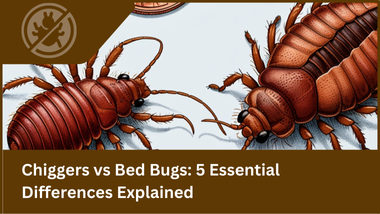Waking up covered in red, itchy bumps is an experience that can be frustrating and bewildering. Your skin feels irritated, and the constant scratching only adds to your discomfort.
You might find yourself wondering what caused these bites. Could they be from bed bugs or chiggers? While both pests are tiny, the irritation they cause is significant. Uncertainty about the source of your discomfort can be unsettling and stressful.
In this blog post, we’ll break down the key differences between chiggers and bed bugs, making it easier for you to identify them and deal with the problem effectively.
But first, let’s take a quick look at what each pest is
Chiggers vs Bed Bugs: Species and Biology
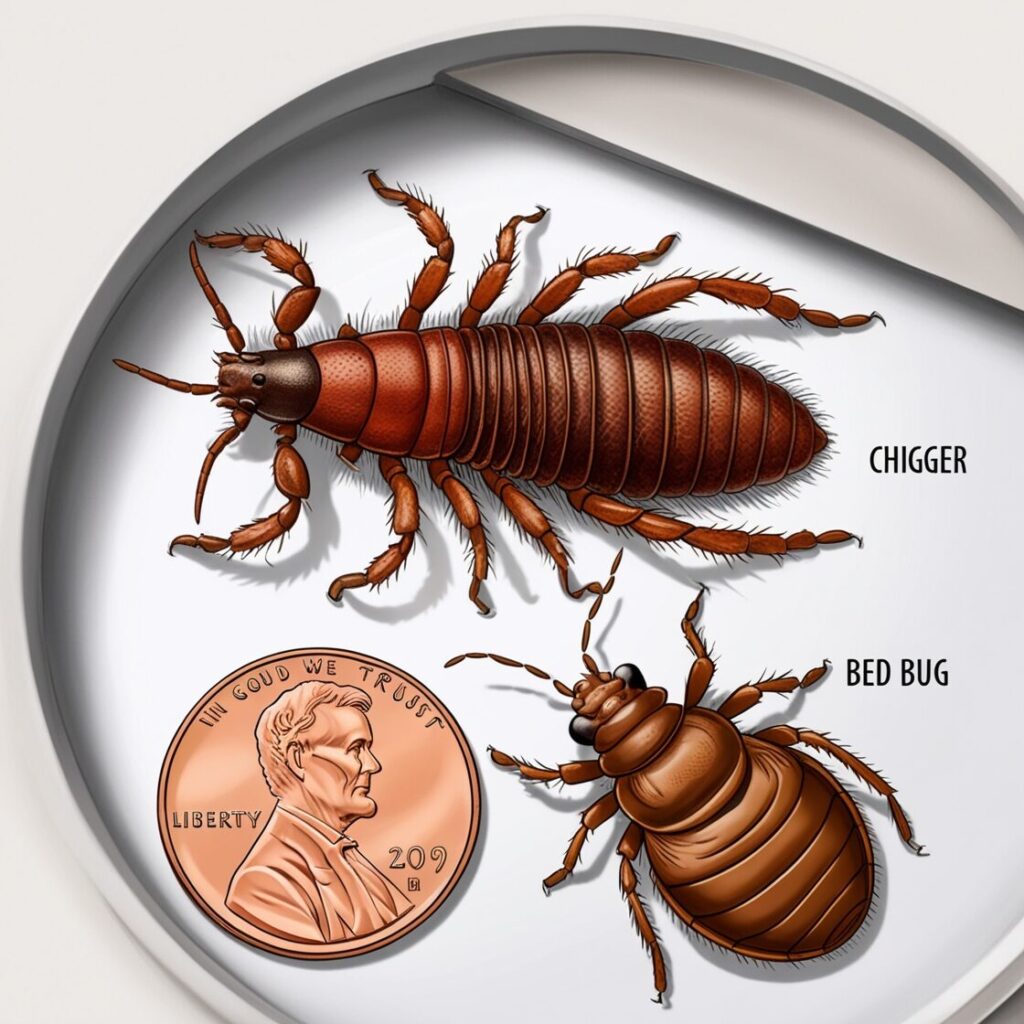
The first key difference between chiggers and bed bugs is their biological classification. Understanding their species helps explain why their bites feel different and how they interact with humans.
Chiggers are the larval stage of mites, specifically from the (Trombiculidae) family. They are more closely related to spiders and ticks than to insects. Chiggers don’t feed on your blood, but instead, they use a unique method to consume your skin cells.
When chiggers attach to your body, they inject digestive enzymes into your skin. These enzymes dissolve the skin cells, which the chiggers then feed on for nourishment.
In contrast, bed bugs are parasitic insects from the Cimicidae family. These pests are bloodsuckers and feed exclusively on human or animal blood. Bed bugs have specialized mouthparts that allow them to pierce the skin and draw blood.
Unlike chiggers, bed bugs are not microscopic, and they primarily feed at night while you’re asleep. They are particularly drawn to the warmth and carbon dioxide emitted by sleeping humans, making your bed the perfect feeding ground.
Now that we know what these pests are and where they come from, let’s delve into their differences.
1. Chiggers vs Bed Bugs: Size and Visibility
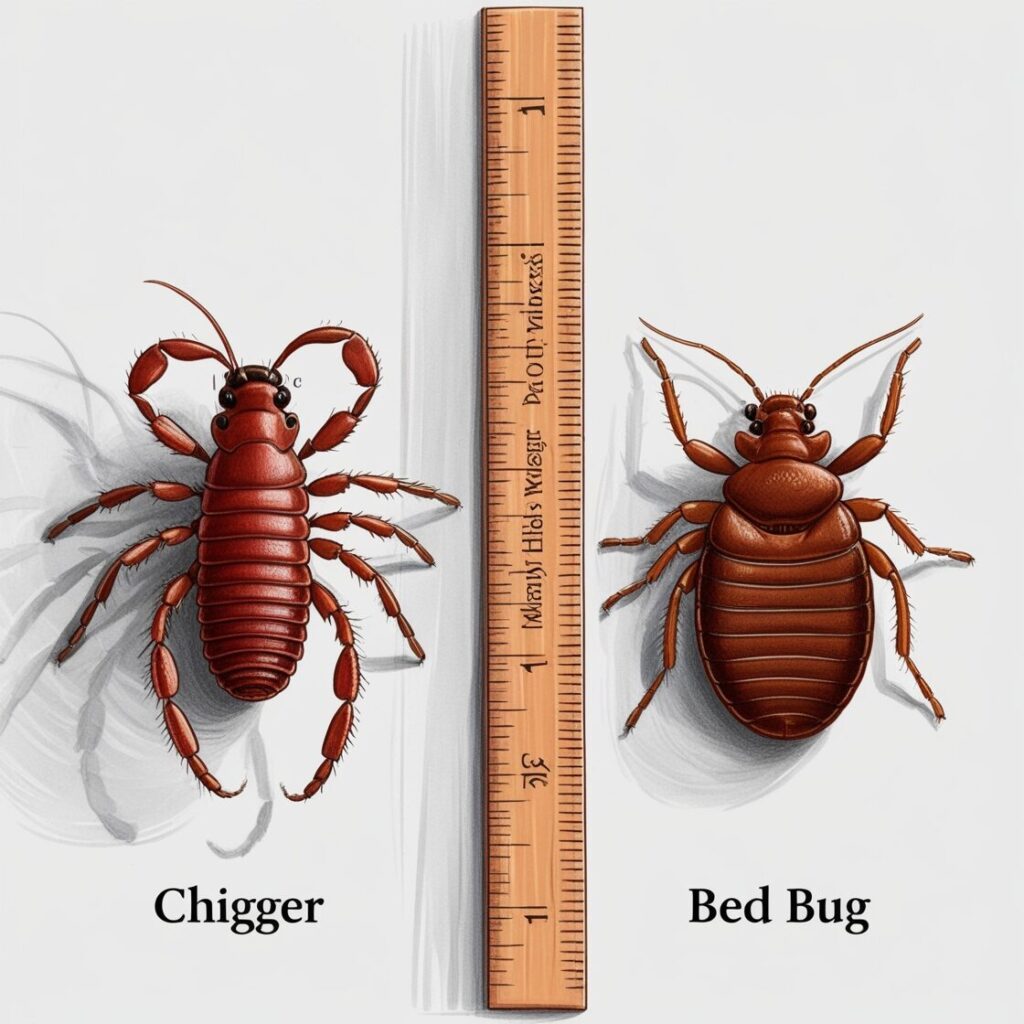
One of the most frustrating aspects of dealing with both chiggers and bed bugs is how difficult they can be to detect. However, their size and visibility differ significantly, giving you clues to identify the pest causing your discomfort.
Chiggers are practically invisible to the naked eye. These tiny mites measure about 1/150th of an inch, which is smaller than a pinhead. Without a magnifying glass or microscope, you won’t be able to see a chigger. This makes detecting them in the wild — especially in grassy fields, damp woodlands, or overgrown lawns — nearly impossible until you start to feel their bites.
In comparison, bed bugs are small but visible to the human eye. Adult bed bugs are about the size of an apple seed, typically ranging from 5 to 7 millimetres. They are reddish-brown, flat, and oval-shaped. After feeding, bed bugs become swollen and take on a deeper red color, which can make them easier to spot.
You might see bed bugs crawling on your mattress seams, hiding in furniture cracks, or around baseboards. Additionally, their presence is often indicated by small blood spots or dark faecal stains on your bedding, making it easier to detect a bed bug infestation than a chigger problem.
2. Where Do They Live? Outdoor vs. Indoor Habitat
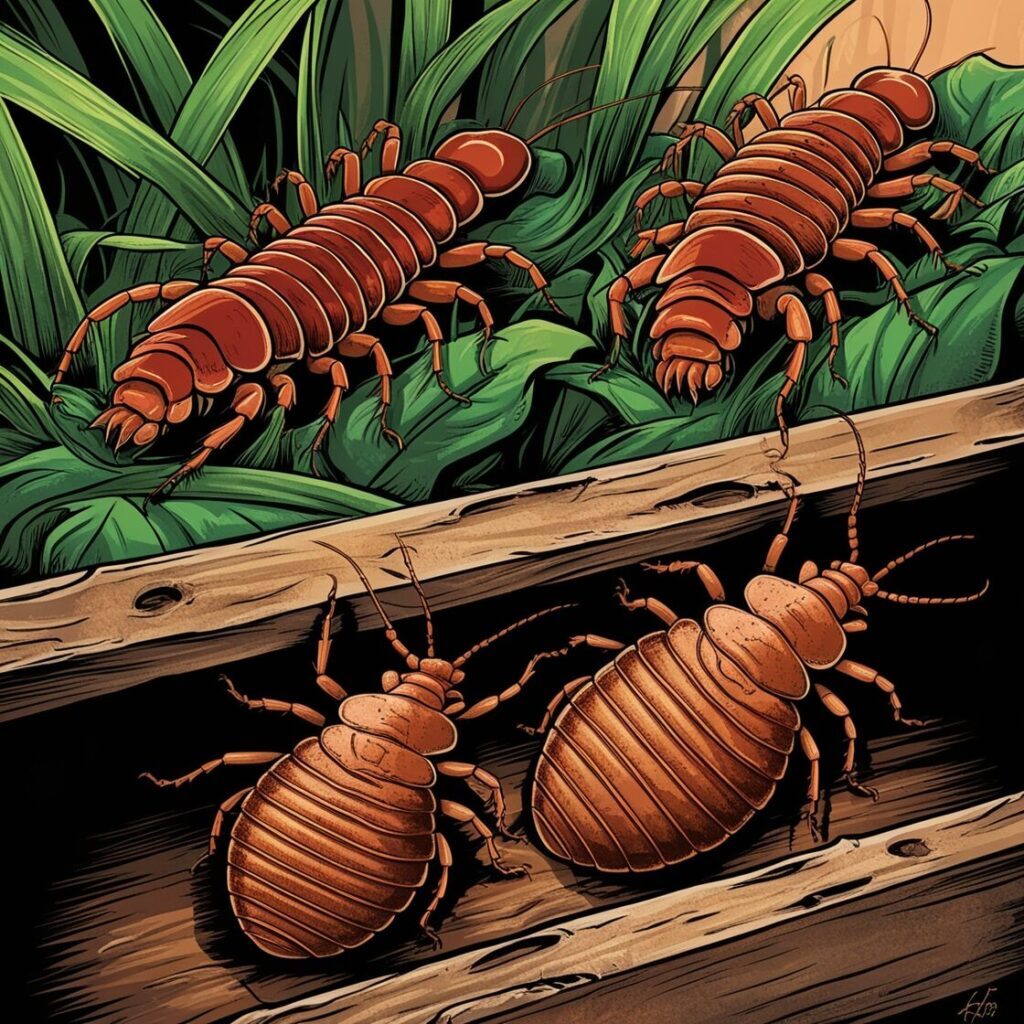
Knowing where chiggers and bed bugs live is one of the most telling signs of which pest you’re dealing with. Their preferred habitats are entirely different, making it easier to narrow down the culprit based on where you’ve been.
Chiggers are outdoor pests, and they are most often found in tall grass, wooded areas, and overgrown lawns. These mites thrive in warm, moist environments and latch onto humans and animals when they come into contact with infested vegetation.
After biting you, chiggers generally drop off once they’ve had their fill of skin cells, so they are unlikely to be found inside your home.
On the other hand, bed bugs are indoor creatures. They are notoriously found in mattresses, box springs, and furniture, especially in areas where people sleep. Bed bugs hide in cracks and crevices during the day and emerge at night to feed.
They can also hitch a ride in luggage, clothing, and used furniture, making them a serious problem in homes, hotels, and even public spaces. If you notice bites that seem to appear after spending time in bed or sitting on upholstered furniture, bed bugs are more likely the cause.
3.Chiggers vs Bed Bugs Bites: How to Tell the Difference
Both chiggers and bed bugs leave behind itchy, red bumps, but the appearance and pattern of their bites can help you tell them apart.
Chigger bites usually appear in clusters or groups, particularly around areas where clothing is tight against the skin, such as the waistband, ankles, or behind the knees.
These bites often look like small red pimples or blisters, and the intense itching typically starts a few hours after the chiggers have bitten you.
The enzymes that chiggers inject into your skin cause significant irritation, leading to swelling and a raised bump that can last for several days.
In contrast, bed bug bites are typically found in straight lines or zigzag patterns on areas of exposed skin, such as your face, neck, arms, and legs. These bites often resemble small red welts and can be intensely itchy, though some people may not react to bed bug bites at all.
Unlike chigger bites, bed bug bites are less likely to appear around tight clothing areas and instead show up where your skin was exposed during the night. Bed bug bites can also take longer to appear — sometimes up to several days after the initial bite — which makes identifying the source of the problem more challenging.
4. Feeding Habits: Skin vs. Blood
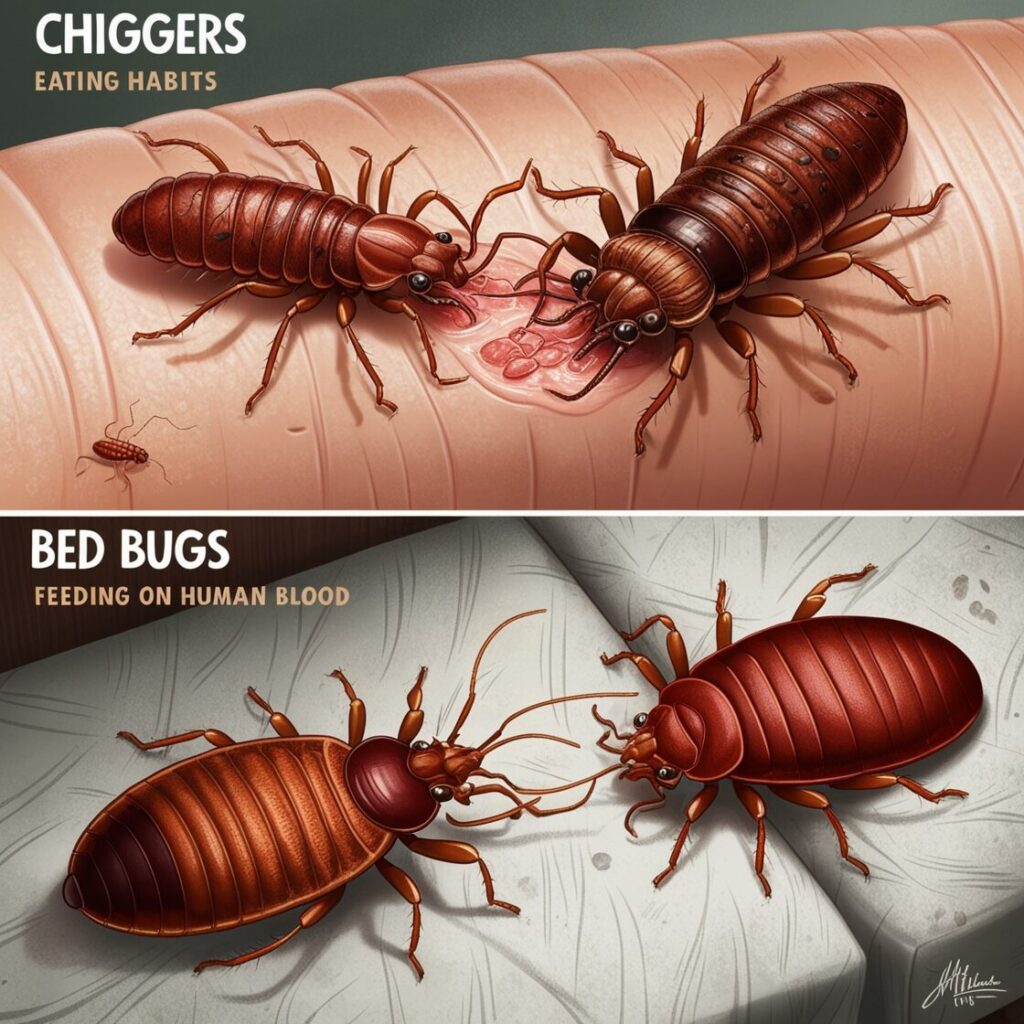
The way these pests feed is one of the most significant differences between chiggers and bed bugs, and it can help you determine which pest you’re dealing with.
Chiggers feed on skin cells. They attach to your skin for a short period, typically for a few hours, during which they inject digestive enzymes that break down your skin cells. The chigger then feeds on this liquefied tissue before dropping off.
Since chiggers only feed during their larval stage, they are not a long-term threat, but their bites can leave lasting irritation.
Bed bugs, however, feed exclusively on blood. They have specialized mouthparts that allow them to pierce your skin and draw blood, much like a mosquito. Bed bugs feed for 5 to 10 minutes before returning to their hiding spots, and they can feed multiple times throughout the night.
Bed bugs can survive for months without feeding, which makes them a persistent problem in infested homes. Additionally, bed bugs are more difficult to eliminate due to their ability to hide in tiny cracks and crevices.
Conclusion
It is important to note the differences between chiggers and bed bugs in order to take the appropriate pest control method to eliminate them.
This goes a long way in saving you money and time, as you won’t mistake one insect for the other and end up paying a fortune to treat bed bugs when the actual pest disturbing your peace is a chigger.
Ready to take action? Contact a professional pest control service today to assess your situation and ensure you’re tackling the right problem effectively! Don’t wait, protect your home and health now.
